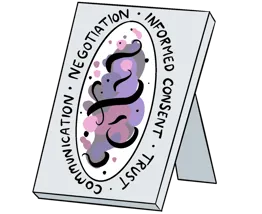Enrol in an online course today for flexible, self-paced learning—no fixed schedule required. Plus, enjoy lifetime access to course materials for convenient revisiting.
How to Transform a Traumatic Memory

“Every time we recall a memory, we have an opportunity to change it,” states Joe LeDoux, a professor of neural science at New York University and author of the book, Anxious. The key is to recall the old memory while simultaneously creating a new experience that changes the emotional meaning of the memory. Scientists call this process memory reconsolidation.
The discovery of memory reconsolidation is significant. First, it has validated that we can alter a traumatic memory so it doesn’t haunt a person anymore. Second, it’s given us insight as to how the brain updates a memory network so we can deliver our interventions more precisely. In the following paragraphs, I’ve summarized five steps you can use with your clients to reconsolidate a traumatic memory using the acronym, ‘RECON’.
1. (‘R’): Recall the traumatic memory, briefly
In order for the brain to change a memory, you have to recall it first. This recollection need not last longer than one minute – just long enough to recall the gist of the memory without being overwhelmed by it.
2. (‘E’): Explore negative beliefs attached to the event and the client’s desired beliefs
To help your client identify negative beliefs they attached to a traumatic event, ask: What did it feel like this event meant about you? Other people? The world, your life, or your future?
Next, explore how your client would prefer to feel about the event. Help your client recognise examples of inner strength, courage, compassion, wisdom or resilience they possess, in spite of the event. Explore the best possible outcome they could imagine for themselves now, understanding that they did the best that they could with the resources they had during the event.
3. (‘C’) Create a felt experience that evokes the client’s desired beliefs
Next, create an experience that helps the client feel what it’s like to embody their desired beliefs. The emotional brain doesn’t learn through verbal reasoning. It has to feel it to believe it. You may evoke felt, corrective experiences just by being an attuned, responsive therapist. But, you can also evoke a corrective experience through imagery, metaphors, music, and movement. For example, invite your client to visualise her desired future self, or a symbolic image that represents her positive post-trauma identity. I’ve seen clients identify as resilient oak trees, powerful lions, compassionate spiritual figures, and even antivirus computer software. Clients usually enjoy this activity and are surprised by how effectively it reduces their pain and helps them tap into their strengths.
If your client is not responsive to imagery, you could invite them to select a song or create a playlist of songs that evoke their desired beliefs. Safely engaging in a physical movement the client wished they could have completed during a traumatic event can also evoke a sense of power and resolution. Any experiential intervention that helps the client feel what it’s like to embody their desired beliefs around the trauma can induce memory reconsolidation.
4. (‘O’): Objectively describe the memory while integrating the new meaning experience
After your client has accessed an experience that helps her embody her desired beliefs, invite her to describe the traumatic memory from this resourced state. Suggest your client finish the story with a new ending – a point where they realised they escaped, survived, gained new wisdom, and so on.
5. (‘N’): New narrative integration – repeat and revise the story until the new meaning of the memory feels true
Invite your client to repeat this updated narrative of the traumatic event back to you again. Repeating the new narrative helps solidify new beliefs and gives you an opportunity to revise any other negative beliefs that arise. You will know the memory has been reconsolidated when the client can recount a clear, coherent narrative of the event without feeling emotionally dysregulated and reports that their desired new meaning of the memory feels true. Additionally, clients will often report feeling relieved, lighter, and freer after the process.
The RECON protocol can be integrated into any therapy model you already use and parallels the steps found in other effective trauma therapies. Clients usually like it because it helps them access their resilience and move beyond their pain. I hope you will try it and let me know how it works for you and your clients!
The New Rules of Trauma Treatment: Integrating Neuroscience for Resilience, Connection and Post-Traumatic Growth, a two-day workshop with Courtney Armstrong, LPC, MHSP is in London W14 on 22nd-23rd November 2019.


















